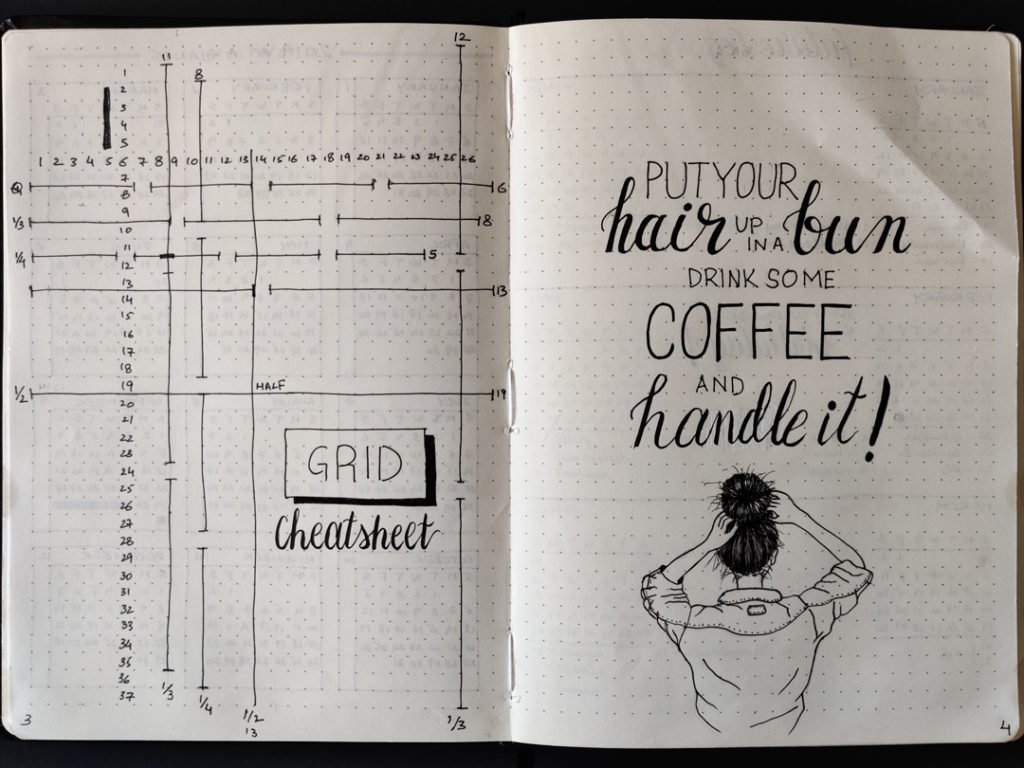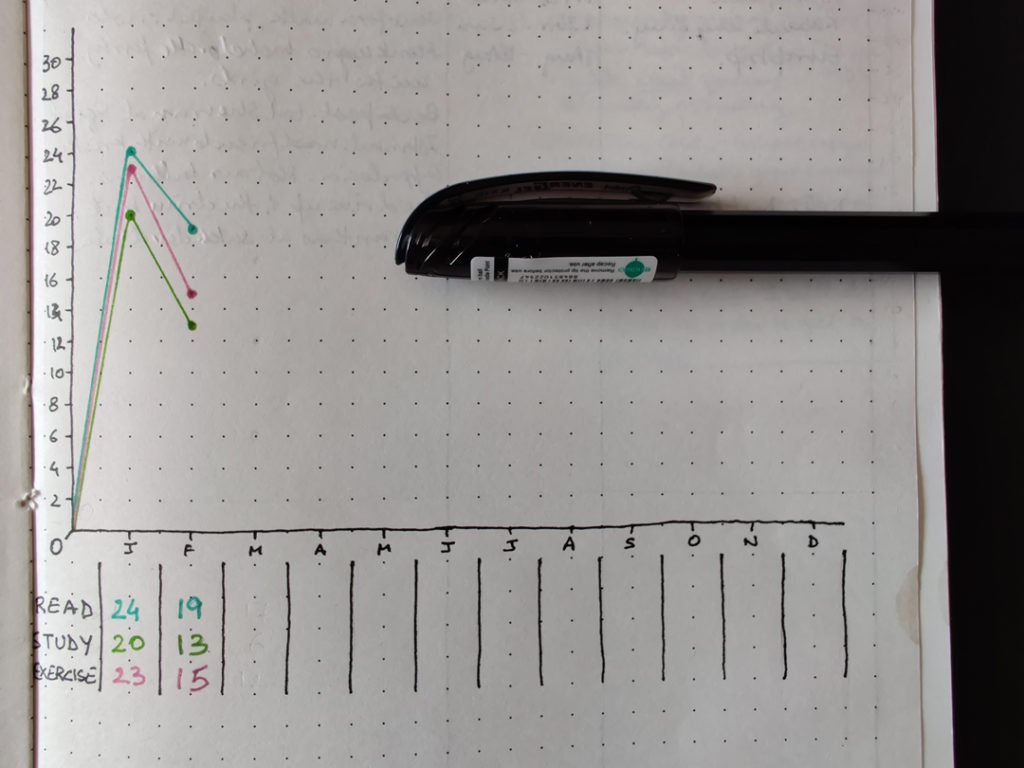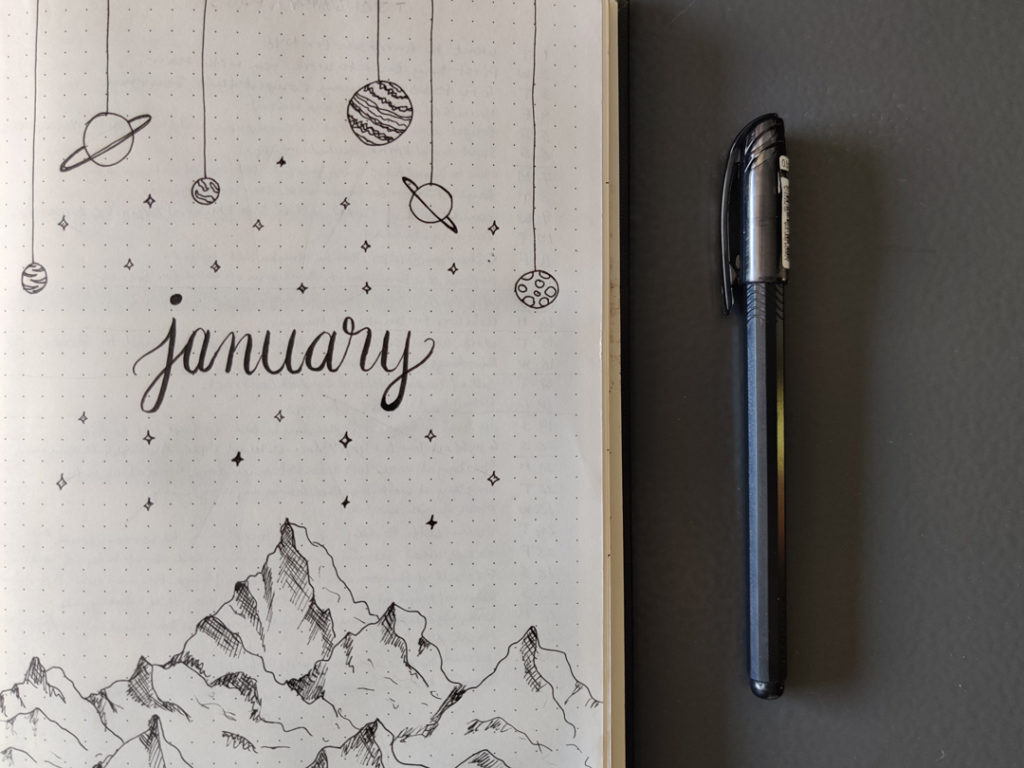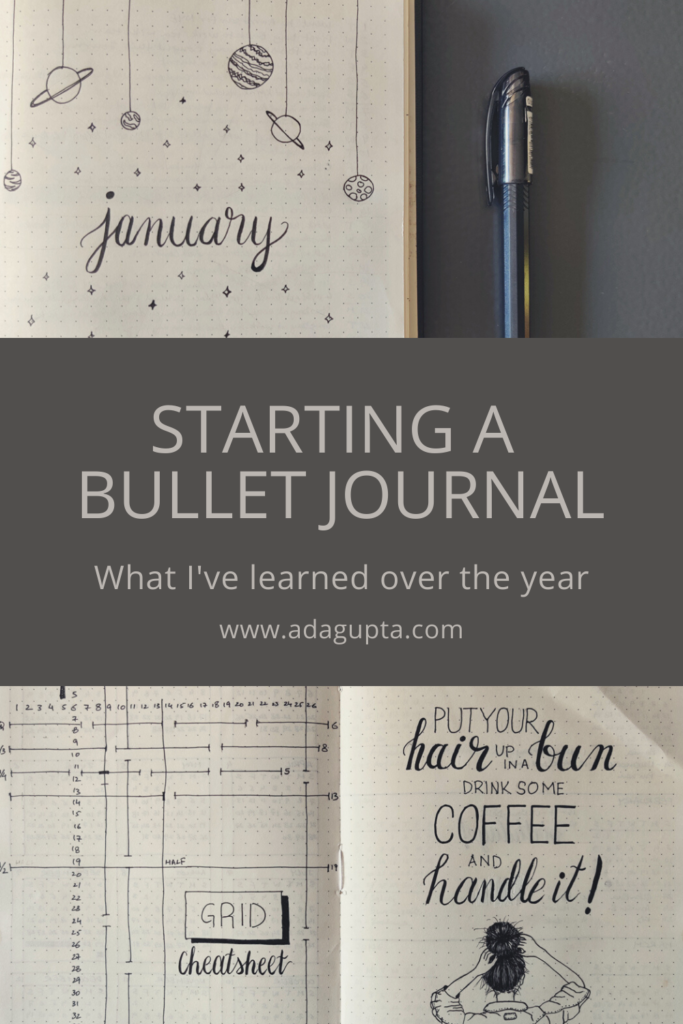I may be relatively new to bullet journaling, but I’ve always been a planner, and lists are my go-to tool for anything I need to plan or get done. In this post, I’ll be discussing some of the things I’ve learned from a year of bullet journaling.
But before I dive into it, a plea on behalf of lists: You know how you think you can have a mental to-do list and just remember everything you need to do? Yeah, that doesn’t happen. No matter how well you think you can keep everything in that brain of yours, there will be things you’ll forget. It’s just how it is. And that’s not coming from the bullet journalist in me, it’s coming from the user experience designer in me. There’s a principle in UX design that’s called ‘Recognition over recall’ which talks about how recognition memory comes easier to people that recall memory, in other words, if you see a clue, it’ll be easier to search your memory as against recalling something with no clue at all. So do yourself a favour, and write things down!
Now on to things I’ve learned from a year of bullet journaling.
You save paper and space
Before I started with a bullet journal, I had a Filofax planner handed down to me from my mom. Both my parents had one each and on entering the workforce, I got one for myself, soon, my sister got one too and we were a big happy family of filofax fanatics. But every year when I would set up my planner, I would remove half the pages that came in the year’s fillers, because they were just not relevant to me and even after that, I would have so much paper I wouldn’t use because I just didn’t need an entire page to a day, also, it’s a big fat thing to be carrying around!
That’s when I discover the bullet journal method and the flexibility of it really appealed to me. I could have as much or as little space for a daily to-do list as I wanted, I didn’t have to throw away any pre-made spreads, I could just make my own. And it’s so much easier to carry around and look much better than the bulky old planner I had before this.
It’s okay to make mistakes in your Bullet Journal
Mistakes are what make you unique, it’s how you deal with them that matters. I’ve made so many mistakes with my first bullet journal! Heck, I make so many mistakes in every bullet journal! These vary from spelling mistakes to drawing the spread wrong to even going well past 31 while making the monthly calendar (I zoned out, it happens!)
But it’s okay, no one’s going to say anything to you about it, and if it really bothers you because you’re a perfectionist, get a correction tape! Seriously, they’re the best thing and I always carry one with me.
There will be blank collections
When I started, all the collections looked so exciting! I browsed through Pinterest endlessly looking for all the various collection ideas I could make in my journal. Naturally, I went a bit overboard. Fitness tracker? Yes. Maybe/someday list? Yes. Year in Pixels? Yes. Did I fill them all out? No.
It’s tempting to try out new collections, but over a period of time you realise you don’t really use some of them, and they’re left blank at the end of the year. Good. You now know you don’t need that collection, don’t make it next year. Try out some new ones and see how that works out for you.
The way you journal will keep changing
I started out with making really elaborate monthly spreads. There were quotes and doodles and lot’s of highlighters, then, later through in the year, I dropped those. I also started out with one tracker for the whole year to track how much I work out, read, and study. That too did not get filled out beyond the first quarter. I switched things up by moving my trackers into my monthly spreads. I used to set up the entire week in advance, but that took too much time and effort and I never knew how much space to leave for each day, so I very early dropped that and moved to daily entries instead.
Basically, I’ve learned that your style of bullet journaling will keep changing, you have to keep experimenting and fine-tuning what works for you and even when you feel like you’ve found your rhythm, something new will come along that’ll only change that for the better.
For example, I thought I’d landed on a perfect method for myself, till I noticed how much longer my Monday lists are compared to the rest of the week and how it’s more of a brain dump that a to-do list. I now start my week with a brain-dump list and then pull things from that into my Monday lists, just so that the first day of the week doesn’t seem so daunting.
It doesn’t matter if it doesn’t look good
Seriously, unless you want to post your spreads on social media, it really truly absolutely does not matter what your journal looks like. The point of a bullet journal is not for it to look pretty, it’s for it to be effective and help you be productive and mindful.
I felt a little exhausted initially when I was setting up my first one because it took me hours (!!!) to make all the spreads. After a point, I thought to myself, honestly who cares! No one’s going to be looking at these except me, and if I’m okay with the way it looks, then that’s all that should matter.
You will use other tools to be productive too
The Bullet Journal Method is not perfect. (Sorry Ryder Carroll!) It’s great, but it’s not perfect. And you will need other tools to reach a higher level of productivity. One of these tools for me is the good old Google Calendar. It helps me think of each task in my bullet journal in the context of time because, let’s face it, nothing really takes 5 minutes to do. Blocking time on your calendar, even if it’s 15 minutes, increases the chances of you doing those tasks because you’ve made the time for it, and once you start thinking of your tasks as time blocks, you’ll be able to gauge what you can realistically achieve in a day and what needs to be pushed to another day.
Let’s hear from you
Those are some of the things that I’ve learned from a year of bullet journaling. What are some things you’ve learned and what’s your experience been like? Haven’t started bullet journaling yet? I recently wrote a blog that breaks it all down for you, so here’s hoping that gives you a nudge toward getting started.








